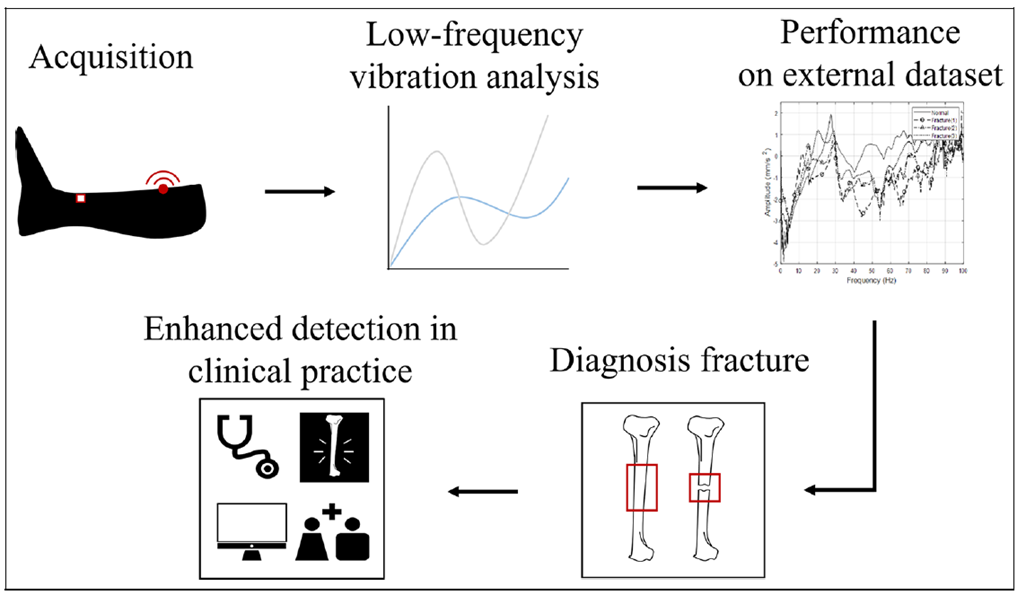[98] Investigation of bone fracture diagnosis system using transverse vibration response
G. H. Yoon, Y. J. Woo, S. G. Sim, D. Y. Kim, and S. J. Hwang. Proceedings of the Institution of Mechanical Engineers, Part H: Journal of Engineering in Medicine 235, no. 5 (2021): 597-611.
In this study, a new diagnostic system is developed to easily identify bone fractures in non-medical environments. It is difficult to determine the extent of cracks, fractures, and the healing process inside humans owing to the differences among people and limitations of state-of-the-art medical devices. Thus, various medical techniques, such as X-ray, computed tomography, or fork tuning systems have been developed, and more advanced technologies are emerging in the medical engineering field. In hazardous circumstances, medical devices to detect bone fracture are not available or cannot be easily applied. Thus, there is a need for the rapid detection of bone fractures without medical devices. To this end, this study analyzes the transverse vibration responses of bones because bone fractures cause different mechanical vibration reactions. By comparing the transverse vibration responses of both healthy and fractured bones, the modal assurance criterion can be calculated and applied to detect the existence of bone fractures. The transverse vibration responses at low and high frequencies are different and exhibit different modal assurance criteria depending on whether or not they are abnormal. Then, the virtual spectrogram of the differences between the signals from non-fractured and fractured bones is calculated. With the help of the present criterion with transverse vibration data, this difference can be analyzed quantitatively and effectively. To validate the proposed system, experiments with artificial specimens, animal legs, and a cadaver are performed.
| 첨부파일 |
|---|
